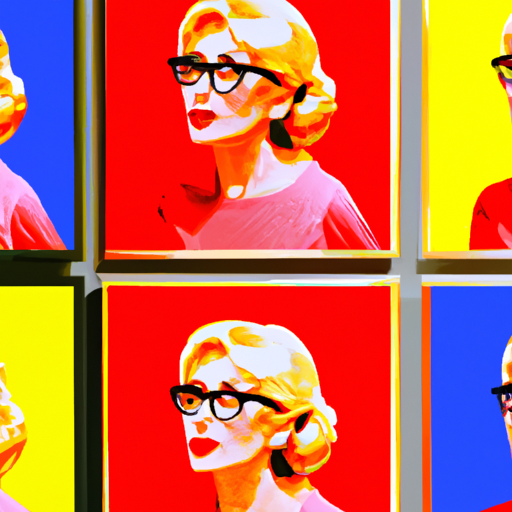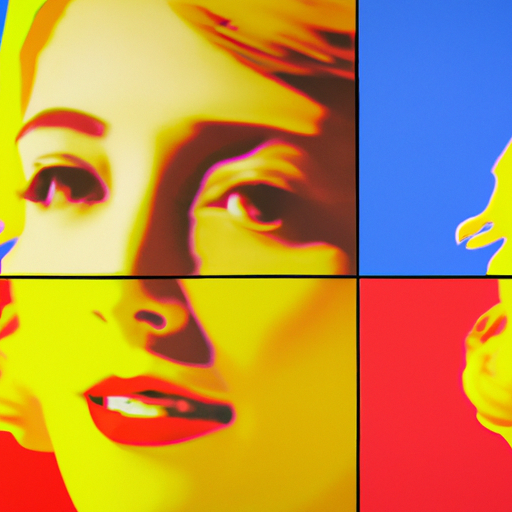
-
Table of Contents
- Pop Art and Its Enduring Influence in Modern Design
- The Origins of Pop Art
- The Influence of Pop Art on Modern Design
- 1. Bold Colors and Contrasting Combinations
- 2. Repetition and Patterns
- 3. Appropriation and Collage
- 4. Pop Culture References
- Case Studies: Pop Art in Modern Design
- 1. The “I ♥ NY” Logo
- 2. The Apple iPod Campaign
- 3. The Louis Vuitton Collaboration with Jeff Koons
- Conclusion
Pop Art and Its Enduring Influence in Modern Design

Pop art emerged in the 1950s as a reaction against the prevailing art movements of the time. It challenged the traditional notions of art by incorporating popular culture and everyday objects into its works. This movement, led by artists such as Andy Warhol and Roy Lichtenstein, not only revolutionized the art world but also had a profound impact on modern design. In this article, we will explore the enduring influence of pop art in modern design and how it continues to shape our visual culture.
The Origins of Pop Art
Pop art originated in the United Kingdom and the United States in the 1950s and 1960s. It was a response to the consumerist culture and mass media that dominated post-war society. Artists sought to blur the boundaries between high and low culture by incorporating elements from popular culture, such as advertisements, comic books, and everyday objects, into their works.
One of the key figures in the pop art movement was Andy Warhol. His iconic works, such as the Campbell’s Soup Cans and Marilyn Monroe portraits, epitomized the movement’s fascination with mass production and celebrity culture. Warhol’s use of bright colors, bold lines, and repetition became hallmarks of pop art and continue to influence modern design to this day.
The Influence of Pop Art on Modern Design
Pop art had a profound influence on modern design, shaping various fields such as graphic design, fashion, interior design, and product design. Its impact can be seen in the following ways:
1. Bold Colors and Contrasting Combinations
Pop art introduced a vibrant color palette to the world of design. Artists like Warhol and Lichtenstein used bold, saturated colors to grab the viewer’s attention and create a sense of visual impact. This use of color continues to be a popular choice in modern design, whether it’s in graphic design, fashion, or interior design.
For example, many contemporary fashion designers draw inspiration from pop art, incorporating bright colors and contrasting combinations into their collections. Brands like Moschino and Jeremy Scott often feature bold, eye-catching prints reminiscent of Warhol’s iconic works.
2. Repetition and Patterns
Pop art embraced repetition as a way to emphasize the mass-produced nature of consumer culture. This repetition of images and patterns created a sense of rhythm and movement in the artwork. Today, repetition and patterns are widely used in modern design to create visual interest and convey a sense of energy.
Graphic designers often incorporate repetitive elements into their designs, whether it’s through the use of patterns, grids, or repeated motifs. This technique can be seen in various branding campaigns, where repeated logos or symbols create a cohesive and memorable visual identity.
3. Appropriation and Collage
Pop art challenged the notion of originality by appropriating and recontextualizing existing images and objects. Artists like Richard Hamilton and Robert Rauschenberg incorporated found objects and images into their works, blurring the boundaries between art and everyday life.
This approach continues to influence modern design, particularly in the field of graphic design. Many designers incorporate collage techniques and found imagery into their work, creating visually striking compositions that challenge traditional notions of design.
4. Pop Culture References
Pop art celebrated popular culture and embraced the icons and symbols of its time. From celebrities to consumer products, pop art drew inspiration from the world of mass media and transformed it into art. This celebration of pop culture continues to be a prevalent theme in modern design.
Brands often incorporate pop culture references into their designs to connect with their target audience. For example, Coca-Cola’s iconic logo and branding have become synonymous with pop culture, and the brand frequently collaborates with artists and designers to create limited-edition collections that pay homage to pop art.
Case Studies: Pop Art in Modern Design
Let’s explore a few case studies that demonstrate the enduring influence of pop art in modern design:
1. The “I ♥ NY” Logo
The “I ♥ NY” logo, designed by Milton Glaser in 1977, is a prime example of how pop art aesthetics can be applied to graphic design. The logo features bold, blocky letters and a heart symbol, creating a simple yet instantly recognizable design. It has become an iconic symbol of New York City and has been widely imitated and parodied.
2. The Apple iPod Campaign
Apple’s iPod campaign, launched in 2001, incorporated pop art-inspired visuals to promote its revolutionary music player. The campaign featured colorful silhouettes of people dancing against vibrant backgrounds, reminiscent of Warhol’s iconic portraits. This bold and visually striking campaign helped establish the iPod as a cultural phenomenon and solidified Apple’s reputation for innovative design.
3. The Louis Vuitton Collaboration with Jeff Koons
In 2017, luxury brand Louis Vuitton collaborated with artist Jeff Koons to create a collection of handbags and accessories featuring famous works of art, including pieces by Warhol and Da Vinci. This collaboration brought together the worlds of high fashion and pop art, creating a visually stunning collection that blurred the boundaries between art and design.
Conclusion
Pop art continues to exert a significant influence on modern design, shaping various fields and challenging traditional notions of art and design. Its bold colors, repetition, appropriation, and celebration of pop culture have become integral elements of contemporary design. From graphic design to fashion and product design, the legacy of pop art can be seen in countless examples of modern design. As we move forward, it is clear that pop art will continue to inspire and shape the visual culture of our time.
